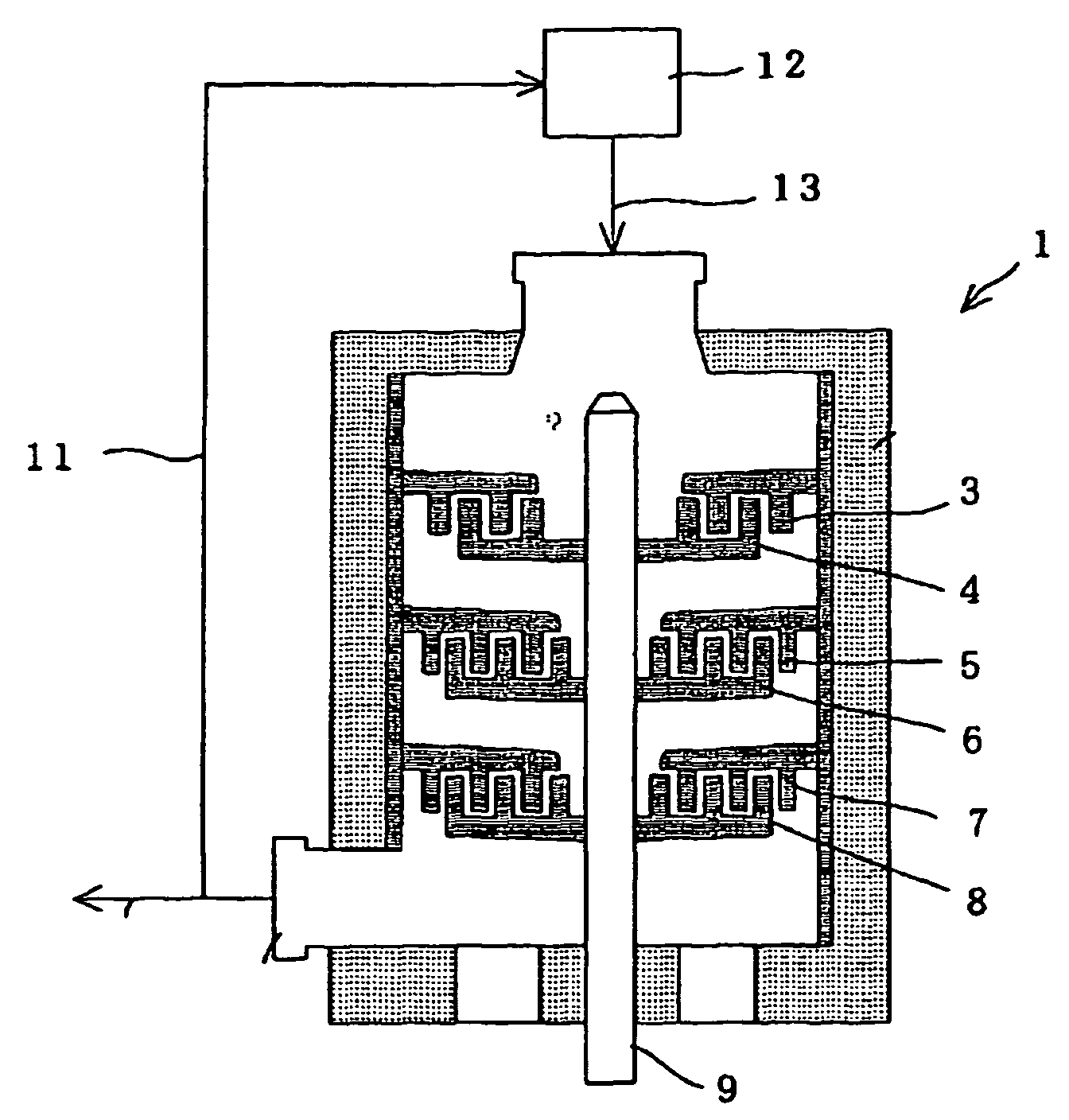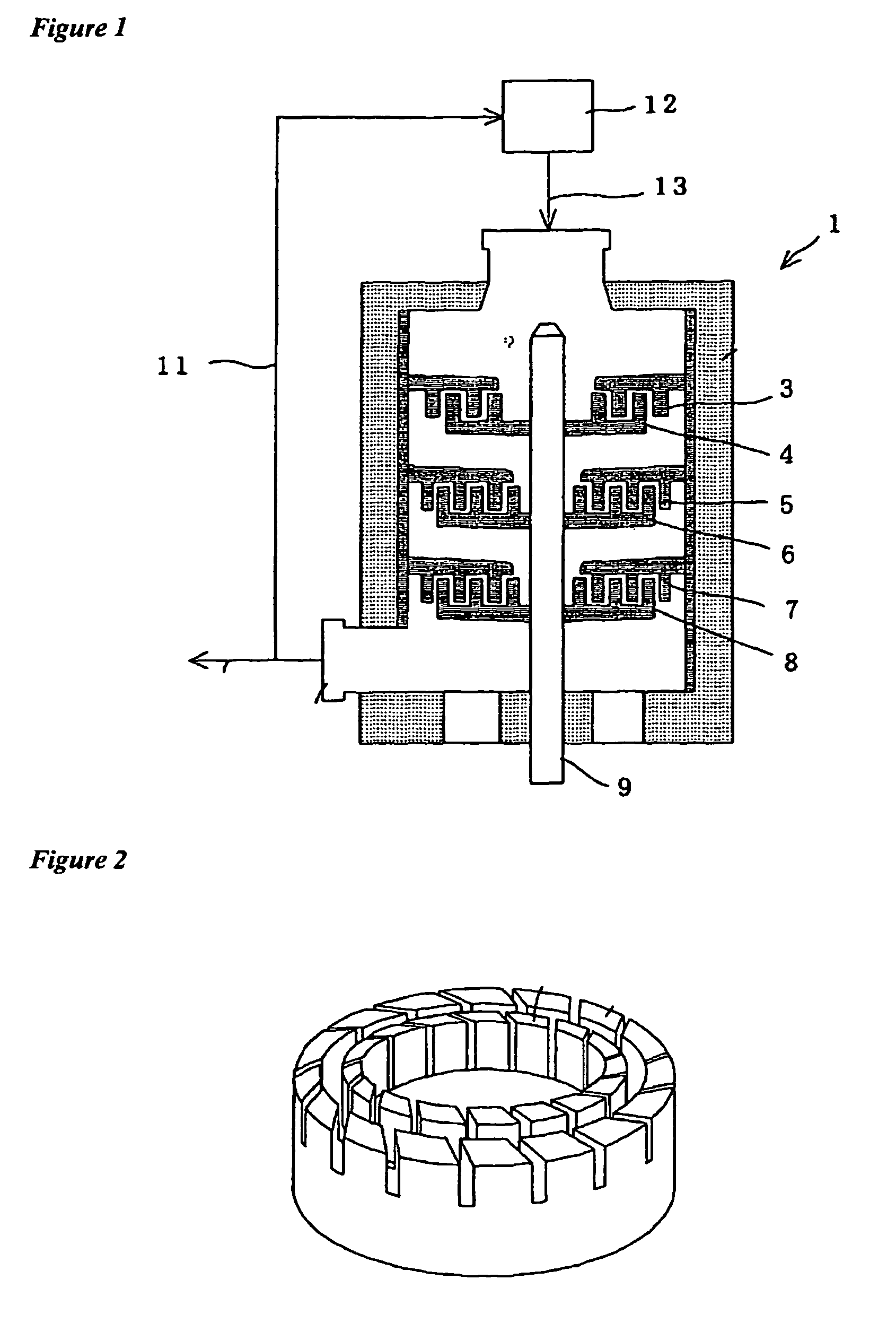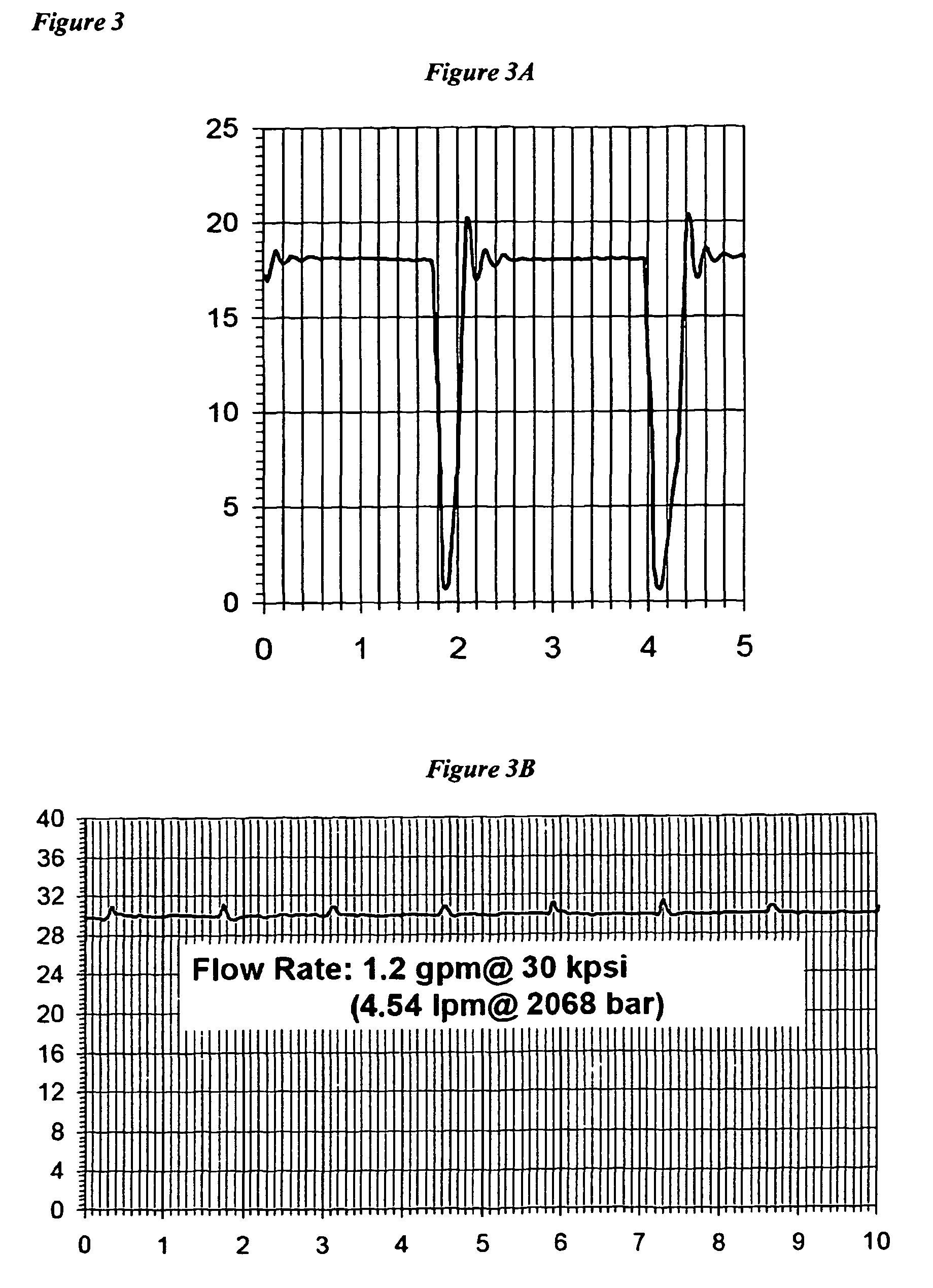Circulation of components during homogenization of emulsions
a technology of emulsion and emulsion, which is applied in the direction of biocide, transportation and packaging, antibody medical ingredients, etc., can solve the problems of emulsion degradation during storag
- Summary
- Abstract
- Description
- Claims
- Application Information
AI Technical Summary
Benefits of technology
Problems solved by technology
Method used
Image
Examples
example 1
[0188]The emulsion components squalene, polysorbate 80, sorbitan trioleate and sodium citrate buffer were introduced into an in-line, high speed, rotor / stator homogenizer (IKA Super Dispax Reactor DRS 2000 / 5). Emulsion starting volumes of 280 L and 250 L were used and the speed of the homogenizer was set at 5000±1000 rpm. The temperature of the emulsion during homogenization was maintained at below 60° C.
[0189]Three test runs were carried out. In the first test run, 280 L of the emulsion components were subject to type I circulation, between the homogenizer and a first premix container, for 20 minutes followed by a single type II circulation, transferring the first emulsion components from a first premix stainless steel container, through the homogenizer to a second premix stainless steel container, and then back through the homogenizer. In the second test nm, 280 L of the emulsion components were subjected to type I circulation, between the homogenizer and a first premix stainless ...
example 2
[0197]In further experiments a first emulsion was formed by type I (FIG. 5) or type II (FIG. 6) circulation. For five separate runs the average number of larges particles per ml was as follows:
[0198]
MeanCoefficient of variationType I1.70 × 1090.23Type II1.04 × 1090.13
[0199]Thus the type II circulation results in fewer large droplets and less batch-to-batch variation.
PUM
| Property | Measurement | Unit |
|---|---|---|
| size | aaaaa | aaaaa |
| size | aaaaa | aaaaa |
| oil droplet size | aaaaa | aaaaa |
Abstract
Description
Claims
Application Information
 Login to View More
Login to View More - R&D
- Intellectual Property
- Life Sciences
- Materials
- Tech Scout
- Unparalleled Data Quality
- Higher Quality Content
- 60% Fewer Hallucinations
Browse by: Latest US Patents, China's latest patents, Technical Efficacy Thesaurus, Application Domain, Technology Topic, Popular Technical Reports.
© 2025 PatSnap. All rights reserved.Legal|Privacy policy|Modern Slavery Act Transparency Statement|Sitemap|About US| Contact US: help@patsnap.com



